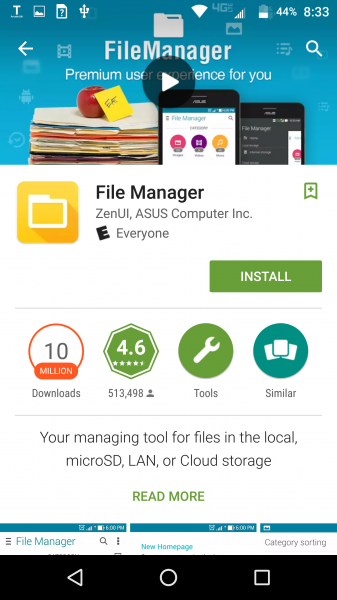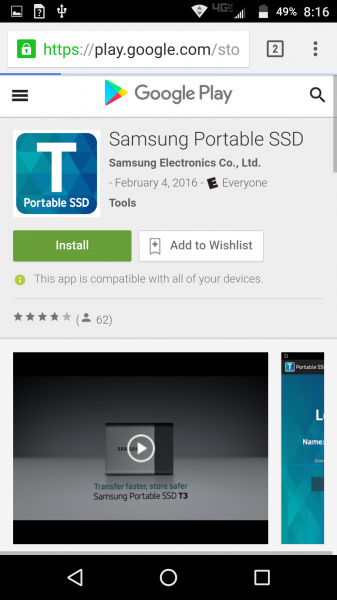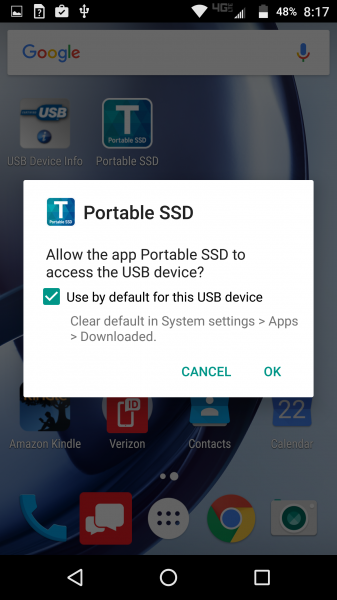The Moto Z Droid is one of the few phones out there that supports USB 3.1 Gen 1 (5 Gb/s) over USB Type-C so I was pretty excited to try it out with the Samsung Portable SSD T3 drive which also supports USB 3.1 Gen 1 (5 Gb/s) over USB Type-C.
When connecting the Samsung Portable SSD T3 directly to the Moto Z Droid, you will see a notification that a Samsung USB drive has been connected over USB. If you select the notification, you'll immediately see the drive's contents.


Using USB Device info App, we can see the Samsung Portable SSD T3 enumerating correctly at USB 3.1 (5 Gb/s) speeds.


One potential challenge with USB 3.1 is that much higher power can be consumed (the Samsung Portable SSD T3 advertises that the max current that can be drawn is 896mA (which at 5 volts is close to about 4.5 watts). Using an oscilloscope, we can see that the actually power pulled is 5 V @ 160 mA or close to 1 watt.
In fact, if you leave the Samsung Portable SSD T3 plugged into the Moto Z Droid, you can see the battery charge being consumed rapidly even if you aren't using the drive or actively using other applications (perhaps the drive is not being put into a low power sleep state). If you are using the Samsung Portable SSD T3 with the Moto Z Droid, it's best not to keep the drive plugged in if you are not using it.
To manage the Samsung Portable SSD T3, it's easiest to first go to the Moto Z Droid's Settings -> Storage. After you select the Samsung Portable SSD T3 listed under the Portable storage section, you can select the three vertical dots on the top right and choose 'Settings'.


In the 'Settings' screen, you can eject, format, and move content from the drive to a SD card.


To use the password protected portion of the Samsung Portable SSD T3, you need to install the Samsung Portable SSD App from Google Play. You can also access this App through this link found in a text file located in the unprotected section of the drive.




Once you open the Samsung Portable SSD App, you'll need to log in with the password used previously to secure the drive.


Once logged in, you should be able to access the Samsung Portable SSD T3.


Unfortunately, the default Storage Manager found on the Moto Z Droid doesn't allow you to copy files anywhere except for Downloads, Google Drive, and Recent locations. You also don't have any options to move files.


Another problem found was that after trying to go back to Settings -> Storage and selecting the Samsung Portable SSD T3 listed under the Portable storage section, the screen would blink but not proceed to viewing the drive's contents like before.

Even trying to use a third party File Manager from ASUS Computer's ZenUI, no content was viewable on the Samsung Portable SSD T3.




Even after logging in again using the Samsung SSD App, there was still no easy way to fully copy and move files from the Samsung Portable SSD T3 to other locations in the Moto Z Droid.

With all the usability issues associated with using the Samsung Portable SSD T3 with the Moto Z Droid, it's disappointing you can't better take advantage of the phone's USB 3.1 capabilities.
 GTrusted
GTrusted







































